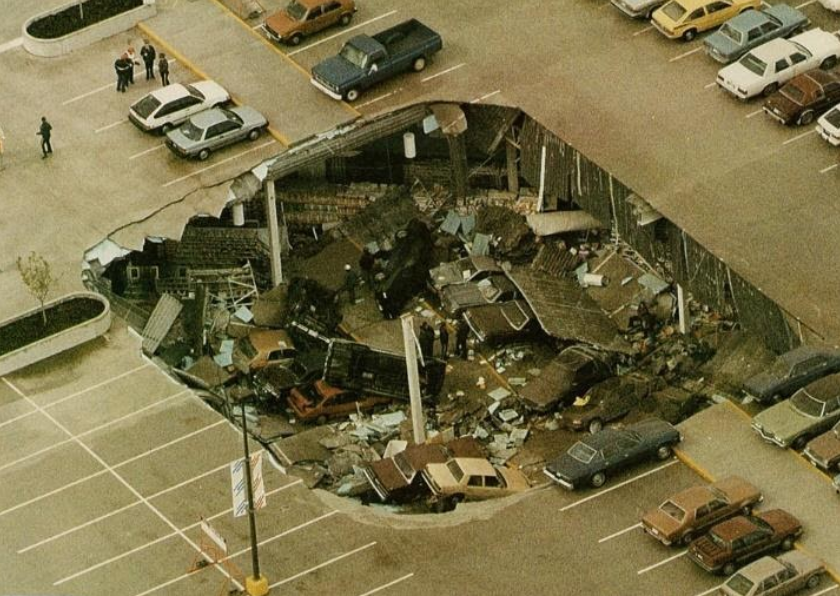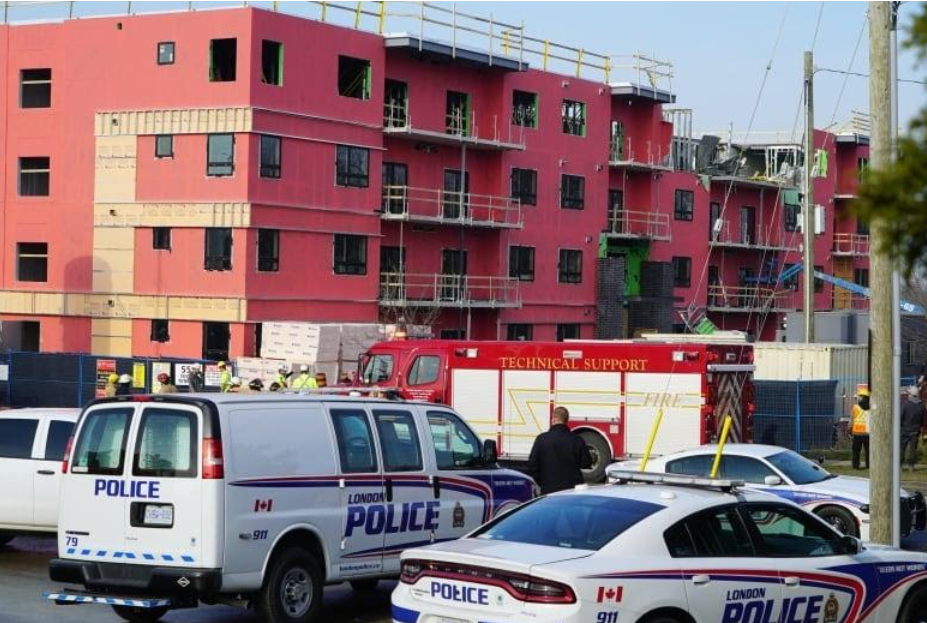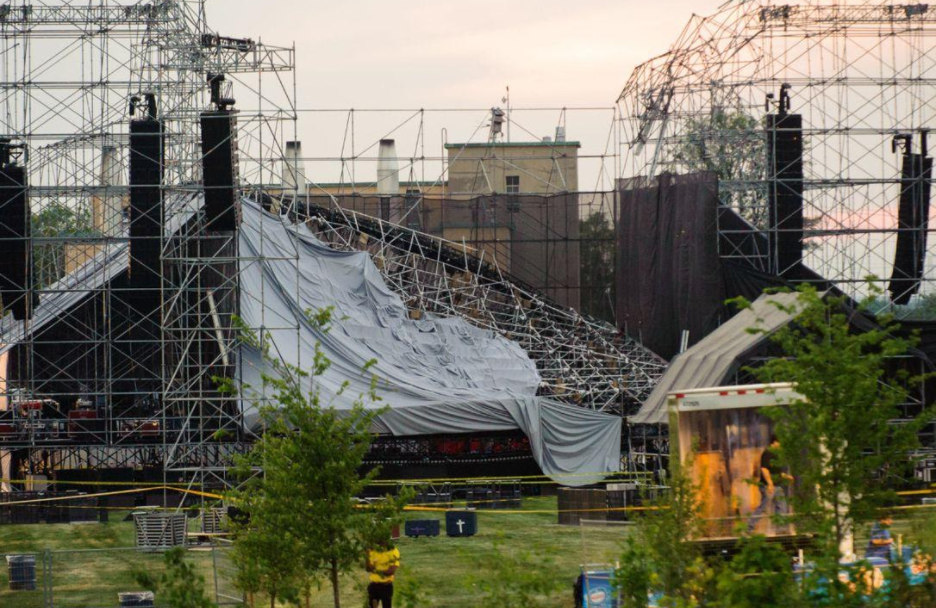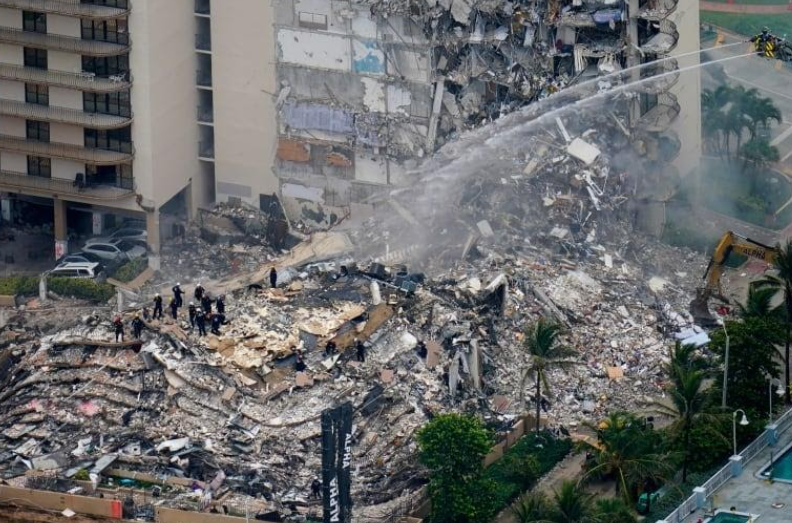Please note: It is not the intent of this post to provide comment or opinion on the happenings of the Champlain Towers South failure. The purpose of this article is to review prospective safeguards and processes in place in Canada (and specifically Saskatchewan) to try to avoid such catastrophes. (Image: Champlain Towers Debris, CBC News, June 26, 2021)
On June 24th, the Champlain Towers South in Surfside, Florida suffered a catastrophic collapse, killing nearly 100 people to date, with others injured or unaccounted for. At the time of writing this article, details were still being brought to light and many claims remain unsubstantiated. We mourn the families of the lives that have been lost and those that are still missing.
Such an event also calls to question: could this happen in Canada? What safeguards do we have in place?
Have such catastrophic collapses occurred in Canada?
In terms of fatal building collapses unrelated to natural disasters or fire, the list is relatively short. However, Canada is not without incident. Here are a few such events:
- 555 Teeple Terrace, Dec 11, 2020, London, ON – 2 fatalities
- Radiohead Stage Collapse, June 16, 2012, Toronto, ON – 1 fatality
- Save on Foods Collapse, April 23, 1988, Vancouver, BC – 0 fatalities

Review of Work
Division C Subsection 2.2.7. of the National Building Code of Canada outlines the responsibilities of design professionals. Specifically, if the building has been designed to Part 4 of the NBCC, then the designer (or another suitably qualified person) shall review the construction of the building and all shop drawings and other related documents relative to the design to determine conformance with the design. Workmanship, materials, and all reports of material tests shall be reviewed by the designer (or another suitably qualified person) during the process of construction.
This direction of the NBCC helps protect occupants from the opportunity of faulty construction, but it does not protect occupants from gradual deterioration of originally conforming design.

Effective communication is key. A report that documents structural deterioration or potential failure should not be left open to interpretation of the reader to determine the severity of the situation.
What processes does the UBAS Act (Saskatchewan) prescribe?
In Saskatchewan, we have the Uniform Building and Accessibility Standards (UBAS) Act, which describes a permitting process, prescribes the powers of the Building Official, and outlines the responsibilities of the Owner and its agents. This allows for the Authority Having Jurisdiction to review the construction documents, ensure that designs have been completed by registered professionals where required, and provide enforcement and administrative services related to building permits.
Among these responsibilities, the UBAS Act identifies that the owner or its agents are responsible to notify the appropriate local authority of the instance of structural failure of a building or part of a building, or the failure of equipment, devices, or appliances that may cause serious injury or loss of life. It may seem obvious if a building has collapsed, but a partial structural failure or failure of a fire protection system may not be so visible.
What if the failure hasn’t occurred yet?
Some building failures are immediate and catastrophic; however most are not. Often there is evidence of gradual failure which, if unaddressed, may ultimately lead to catastrophic failure. Such gradual failure may create an unsafe condition.
In Saskatchewan, we also have the UBAS Regulations, which adopt and amend the National Building Code and set in place various general standards and accessibility standards. Amongst those standards, the Regulations address unsafe conditions. The regulations identify that no owner or its agents may cause, permit, or maintain an unsafe condition in construction, reconstruction, demolition, alteration, removal, relocation, occupancy, or change of occupancy of a building or part of a building. Effectively, it is the owner’s responsibility to ensure that there is never an unsafe condition on their property, even during construction or repairs.
The regulation also identifies that the owner must immediately take all necessary actions to correct the unsafe condition. During such actions, it is the owner’s responsibility to ensure that if the building or part of the building remains occupied, no occupant is exposed to an unsafe condition. If the owner does not take action, the authority having jurisdiction may complete the work on the owner’s behalf and at the owner’s expense.

What are the responsibilities of an engineer who has reviewed the building?
In Saskatchewan, we have the Engineering and Geoscience Professions Regulatory Bylaws through the Association of Professional Engineers and Geoscientists of Saskatchewan (APEGS). Each province and territory has a similar set of bylaws to abide by. Within our Code of Ethics, there are a few clauses that directly apply. The very first clause of the Code of Ethics identifies that members and licensees must “hold paramount the safety, health and welfare of the public…” This is to say that public safety must be the top priority. Therefore, an engineer must do what is in their power to raise awareness to the Owner of an unsafe condition, and potentially notify the Local Authority if warranted.
Another clause from the bylaws identifies that members and licensees must “present clearly to employers and clients the possible consequences if professional decisions or judgements are overruled or disregarded.” If an engineer identifies an unsafe condition, it is the engineer’s responsibility to ensure that the severity of the condition is understood by the client, and that the consequences of inaction or delayed action are understood.
Effective communication is key. A report that documents structural deterioration or potential failure should not be left open to interpretation of the reader to determine the severity of the situation. On-site and/or follow-up communication with the client should be deliberate such that a client does not interpret reason to down-play the potential severity of the situation.
If the engineer has reason to believe that the owner may not notify the local authority of an unsafe condition and/or may not address the condition in a timely manner, the engineer has a responsibility to notify the local authority of the condition.
In Canada, we generally have a framework to work within to keep our buildings safe. Our framework starts with a permitting process to ensure that construction documents are prepared by design professionals in accordance with codes, bylaws, regulations, and other standards. That permitting process carries through construction and incorporates a design professional’s responsibility to review the work in accordance with building code requirements.
Once the building is constructed, the building owner is responsible to identify real or potential unsafe conditions, notify authorities, and remediate the condition. If such action is not taken, the authority having jurisdiction may remediate the condition at the expense of the owner. As part of remediating real or potential unsafe conditions, an engineer may be required to review the property. The engineer also takes responsibility both as the owner’s agent and in accordance with their Code of Ethics to protect the public. This includes clear communication of the severity of the condition, the risk of the condition, and the timeliness of remediation.
What about your Province?
This post discussed some of the legal responsibilities under UBAS and APEGS, but we are curious what other Provinces have to say. Share what you know in the comments below! Things only get better when more perspectives are brought into the mix.


One Response
In British Columbia, engineers and architects use Letters of Assurance. A big reason these exist is because of the Save-On-Foods collapse which you can read about in my KiloLima post here: https://kilolimacode.com/providing-assurance-for-public-safety/. I view Letters of Assurance as one more tool to remind all of us professionals that we are taking responsibility for public safety and that we have an obligation to do proper and thorough reporting when reviewing construction to ensure safety standards are met.